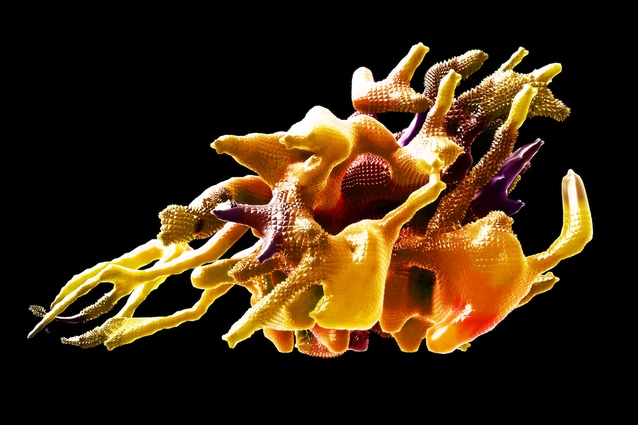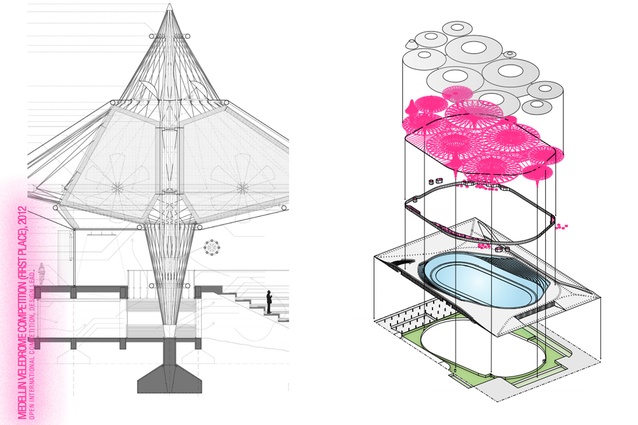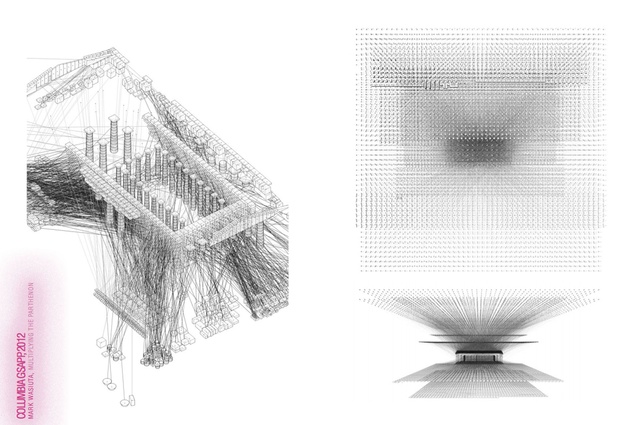Architecture to be at centre stage at Semi-Permanent
The international exposition of design talent known as Semi-Permanent returns to Wellington later this week, providing as it does a special canvas for a cross-section of creative collaborators spanning advertising, art, and architecture.
Amongst the twelve diverse draw-cards for Semi-Permanent is Farzin Lotfi-Jam , a graduate of the Royal Melbourne Institute of Technology (RMIT) who is winging his way to Wellington from his fellowship at the University of Michigan’s Taubman College of Architecture and Urban Planning.

Lotfi-Jam will be speaking on the first day of the two-day event this Friday 18 October, and will no doubt disrupt some of the understandings sometimes held about just how conceptual and adventurous the practice of architecture can be.
His own autobiographical path to being the 23rd Sanders Fellow at Taubman followed gaining a Master of Science in Advanced Architectural Design at Columbia University, which is in turn part of a progression that consists of a wide swathe of international academic and studio based experience - all before turning 30. Sampling that progression is possible through Lotfi-Jam’s digital presence at farzinfarzin.com.
At first glance Lotfi-Jam – who arrived in Australia as a five year old with his Iranian family – has the appearance of ‘distinguished symphony conductor meets gleefully mad scientist’, neither of which are necessarily at odds with the algorithm-driven computational interpretations and technologically experimental architectural design he produces.
Although his exhibited work and research projects differ wildly, last year’s Multiplying The Parthenon project [pdf link here ] provides a good point of access – demonstrating as it does multiple configurations for the internationally iconic monument beyond the 5th century BC classical temple model, with new cultural vantage points deriving from the myth of classical perfection through to all of the various roles played by the Parthenon, as: promiscuous armature, celebrity backdrop, architectural object of study, propaganda device, urban backdrop.
What Farzin then helps to do is to “accelerate the Parthenon’s capacity to absorb multiple interpretations and physical manipulations. Together these assert that the Parthenon’s status as supreme cultural asset is due not to its stability, or iconicity, but to its mutability”.
If new paradigms for architecture are going to continue to emerge then Lotfi-Jam and contemporaries – supported by mentors – are certain to be expanding the territory.
Lotfi-Jam also accepts there is a real need to become better at articulating the often complex investigations he is undertaking – to the architecture community, as well as to non-architects - conceding both that “some of the work is confounding for architects to understand” and that architects are not always articulate enough when talking through concepts about the spatial conditions and geometric dimensions within which architecture is perceived.
Lotfi-Jam admits he is still “hashing out” the interdisciplinary science and art of architecture himself, having entered architecture almost “accidentally” and then finding himself on a fast track into both academia and practice.
“I see no distinction between practice and academia. Certain projects and topics of research are more suited to one environment over another and some can transition both. I think it’s important to always be involved in both. I am currently about 70/30 between academia and practice, whereas in the past this ratio has been at 30/70. Although I’m currently developing projects more suited to teaching and institutional research, I imagine this may change in the future”.
In his teaching career Lofti-Jam has been holding studios exposing students to the potential of computational processes, where students then produced mappings and analyses of sites, seeking underlying rules and forces. For his part he has drawn immense strength from significant mentors like Australian luminary Peter Corrigan and Associate Professor Paul Minifie as well as from the feverish foment of activity generated by student peers during his time at Melbourne’s RMIT.
“RMIT was very influential to my thinking and practice. It instilled within me a provocative bravado, or call it a naïve youthful confidence, coupled with a deep sense of responsibility to my discipline and cultural context”.
While stating that he’s not quite ready to return permanently to his unequivocal home city, he obviously sustains a great deal of inspiration from what’s happening in Melbourne and the achievements of fellow architects, reeling off names such as Roland Snook (who also studied and taught at both RMIT and Columbia), Luke Waldron, Sam Rice, and Rodney Eggleston (who along with Anne-Laure Cavigneaux of March Studio will have made three Semi-Permanent appearances this year in Sydney, Auckland and Brisbane).
Lotfi-Jam attributes the rich history of discourse in Melbourne and being surrounded by people with a high work ethic a having a positive, contagious effect on his work. While in New York City for instance he collaborated with Cristina Goberna and Urtzi Grau (of Fake Industries Architectural Agonism), Ignancio Gonzalez Galan, Bryce Suite and El Equiopo de Mazzanti.
With the troubled but transformative city of Detroit currently a 20 minute drive away, he is also involved in studio work there that isn’t looking to “fix the city” but rather, by suspending value judgements, to help inform an architecture more able to “engage with the life cycle of a city” and to uncover and unpack lessons about being adaptive in a world where the need for “negotiated truces” between humans, the built environment, machines and climactic conditions will grow.
Lotfi-Jam: “Architecture still has a really great role in transforming public spaces because people believe in public space… They are spaces that are essentially infrastructural in that they encourage certain types of activities and events to emerge. Formal manipulation of that space can have a real effect on how it is occupied and appropriated.
“(This is all about how) architecture absorbs or dictates change, how it is utilised by existing people and power structures, and its capacity to transform that agenda”.
Having been to New Zealand once before, on a snowboarding trip, Lotfi-Jam is looking forward to returning for an event such as Semi-Permanent, an event which began 11 years ago and which he remembers being interested in as a teenager long before the word “architecture” featured in his future thinking.
He’s hoping to put the discipline side by side, in a balanced way, with Semi-Permanent’s usual emphasis on visual communications and visual artists – and perhaps even to ”flip” some design students in the audience on to architecture.
He’s certain to show that the practices of artists, collectors, curators and architects aren’t so different after all, and will be doing his best to put cultural norms and assumptions, technological innovations, historical myths and valued objects into conversation with one another.













